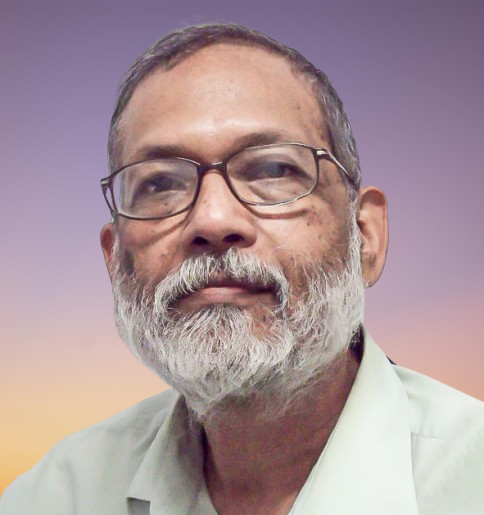Column

Despite a raging Covid-19 epidemic, more and more people in Bare taking it less seriously. Photo: UNB
It's such an odd situation that exists in Bangladesh where despite a raging Covid-19 epidemic, more and more people are taking it less seriously. There are several factors as to why this has happened from social habits to a sense of helplessness. However, even though Corona is here, people are less bothered about it.
High infection but comparatively lower death rates, amazing scale and levels of corruption and a general attitude of taking bad times easily has made it seem less threatening than it was at the beginning. It's become one of the many calamities that strike Bangladesh at regular intervals.
China and Italy
Initially, it was considered to be a Chinese problem. In fact, some Bangladeshi Muslims were happy that such a virus had struck China which was seen as anti-Muslim due to the Uighur issue. They thought it was a curse sent as punishment from Allah. However, this didn't last long as it moved from China to the rest of the world.
Bangladeshis then thought that the virus would only survive in cold weather and as Bangladesh health condition was poor, people had high immunity and natural resistance. Herbal medicines, totka, doa + Allah would be able to take care of the people. Of course most were pious Muslims who couldn't possibly be infected so that was an added bonus.
As the virus engulfed Europe and many began to die reality began to set in. Many immigrant workers began to return home too. Quarantine and isolation was expected to keep the virus at bay. But the check and entry control system at the airports collapsed within the first few weeks indicating the shape of things to come.
For the first few weeks returnee workers contact was traced but by April, infection had spread socially and it began to climb rapidly. It was no longer an external infection but an internal crisis.
Media, social leaders and panic creation
The second phase was pure panic. As even rich countries were hit the psycho-security sense collapsed and Bangladesh went nuts. This was increased by social media and various experts and self -styled do-gooders who all thought that creating panic was going to get the Government to act quickly.
Meanwhile, lockdown began but it was very lazy and probably not effective. Meanwhile public frustration was rising and people were behaving more erratically. This coincided with fears that the urban poor were starving and some were even resorting to coercive begging, media reported. By end of May things were at its peak worst.
Although experts and social leaders had predicted massive deaths in Dhaka's slums, it didn't happen. High poverty was there but not high enough to trigger urban street violence. What none of the experts said was that large scale urban to rural migration had taken place at an unprecedented level, greater than perhaps 1971. Experts had little idea about the coping capacity of the poor.
Meanwhile, medical and technical experts grew at the same rate as the infected did. Media played a big role in manufacturing them as they asked various "experts" etc who said whatever came to their mind. This was not based on evidence as none was available. So it became a production factory of misinformation.
By this time politics had come in and GK's test kit played a major role. It was not the "miracle" which GK claimed as similar ones were in the market all over the world but how the authorities dealt with it. It's still not formally passed or failed but as expected politics has played a role as Dr. Zafrullah Chowdhury was with the opposition.
It was around this time that VIPs -all elderly- began to die and corruption in testing, private hospital billing and the rest began to emerge.
Shahed, Sabrina and the DGHS
Somebody official said that it was going to peak in June but by July it was still running stronger and infection rates were climbing. However, what many experts didn't mention was that the death rate was comparatively lower. That in places like Bangladesh, ailments are socially acceptable.
Since it's considered natural to be sick, Corona began to lose its clout as a panic generator from early July. Young people were falling sick and recovering -main wage earners- so panic was even less. Elderly were expected to die anyway so acceptance was greater. A disease that is often fatal for the aged is not going to have much impact with such a young population. And so the specter of doom began to weaken.
And then the corruption fan hit the ceiling fan. By this time, the entire health sector- public and private - had been so discredited that all tests were mistrusted, people preferred to stay at home to heal and economics had taken the front seat.
Now infections are here, deaths are here and so is corruption but all seem to have become part of the new normal. In just three months people had moved from extreme panic to almost disregard of the covid threat. It matches the profile of a people better able to take care of themselves than the health system because they have no other option.
It's going to be here for a while, some precautions will be there but a (new) normal life will be here, Covid or not. More will die but many centuries of coping with disaster has trained people to overlook such threats when livelihood is under threat.

























Leave a Comment
Recent Posts
Have we freed the courts?
Years down the line, we may well look back on it as the interim govern ...
Will the proposed Dhaka Centra ...
The sun rises over the capital’s seven historic colleges, castin ...
A treasure-trove of ideas, forms, and colours
More than 156,000 expatriate Bangladeshis residing i ..
Roots in Rome, Heart in the Carpathians
The search for the missing Malaysia Airlines flight ..